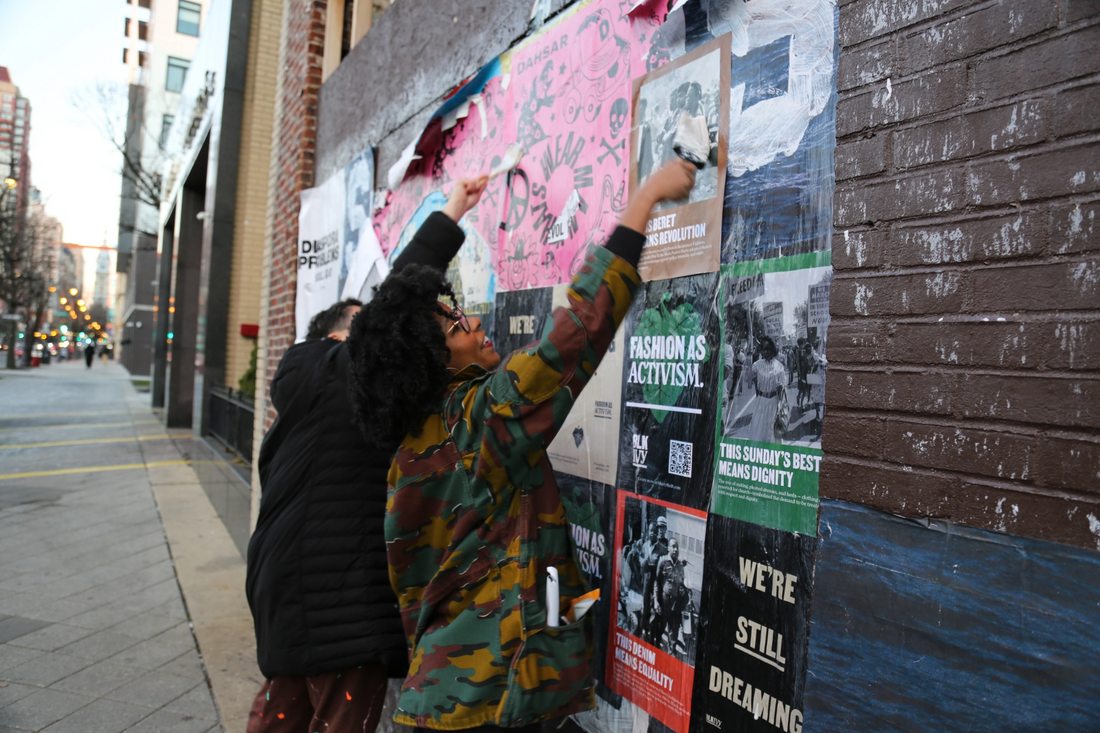
Week 1 of 4 of our Black History Month reading & listening guide.
Introducing: the Blk Ivy Learning Guide
In honor of Black History Month + the launch of Blk Ivy Thrift, we created a 4-week learning guide that explores the intersection of fashion and the civil rights movement. We are proud to have partnered with the Fashion and Race Database for this series.
Receive a FREE 30-day trial of the Fashion and Race Database by using this link. Promo ends February 28th, 2023.
What does “fashion as activism” mean?
We often talk about fashion trends and cycles, but have you ever thought about them through the lens of race? From "sunday’s best" to leather to denim, the clothing that protestors wore was always intentional.
This week, we will take a higher level look at the role that fashion played in the civil rights movement.
Meet This Week's Resources:

Fashion Hasn't Been a Bystander in the Black Civil Rights Movement
The iconic images of protest movements past bear at least one thing out: that dress is as much a political statement as a fashion statement.
From suits to graphic tees, this article highlights the fashion that defined the many iterations of the Civil Rights Movement. Access the article here.

Fashioning the Protest
He [Malcolm X] is in his recognizable slim dark suit, narrow tie, and horn-rimmed glasses. The sober and simple attire was the unofficial dress code of the Nation of Islam, but Brother Malcolm — by then also known as Malik el-Shabazz after converting to Sunni Islam — had a longer history with the style.
Researcher Angela Tate unpacks the cultural impact of the zoot suit, and explains how fashion and style have marked both political expression and resistance. Access the article here.

The Invisible Seam: Statement Piece
“At the heart of these civil rights protests, how you presented yourself mattered. People who knew that they would be seen on the streets, and perhaps even photographed or on television, were strategic about the clothes they wore and even how they styled their hair. Respect, citizenship, and belonging were arguments that could be made through your appearance.”
A conversation on how fashion is used as a tool for protest, featuring Angela Tate, Richard Thompson Ford, Elizabeth Way, and Miko Underwood. Listen to the podcast episode here.

Culture & Conversation: A Virtual Lecture with Kimberly Jenkins
Kimberly M. Jenkins is a fashion studies scholar, professor and founder of Artis Solomon, which offers a consultancy on fashion history and cultural awareness, and powers The Fashion and Race Database.
Learn more about Kimberly's work and the journey to building the Fashion and Race Database by watching the virtual lecture here.
Why the Fashion and Race Database?
As we were creating this learning guide, we kept finding ourselves referencing the Fashion and Race Database. We were thrilled when Kimberly Jenkins agreed to partner with us by offering a free 30-day trial.
The database centers and amplifies the voices of those who have been racialized in fashion, illuminates under-examined histories, and addresses racism throughout the fashion system.
Join the Conversation
We are all learning together. Share your learning journey with us in the comments below, or on our Instagram at @blkivythrift.

